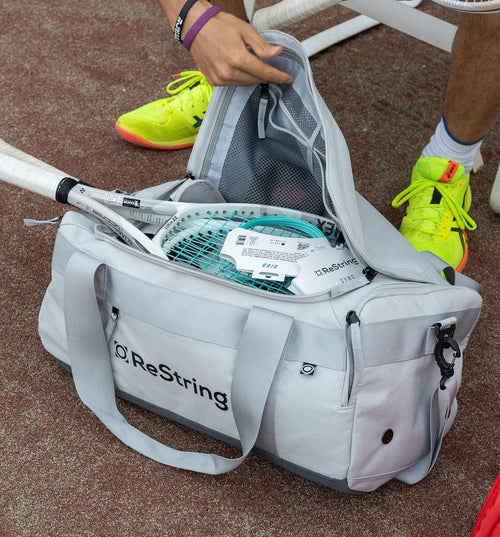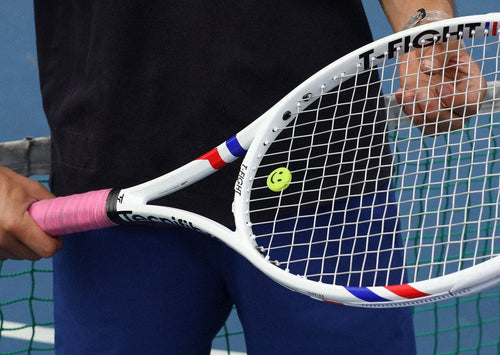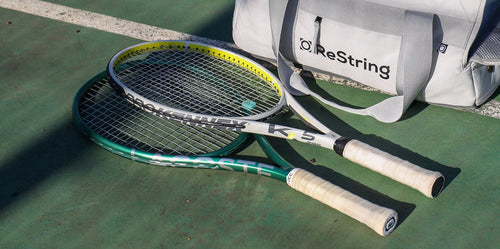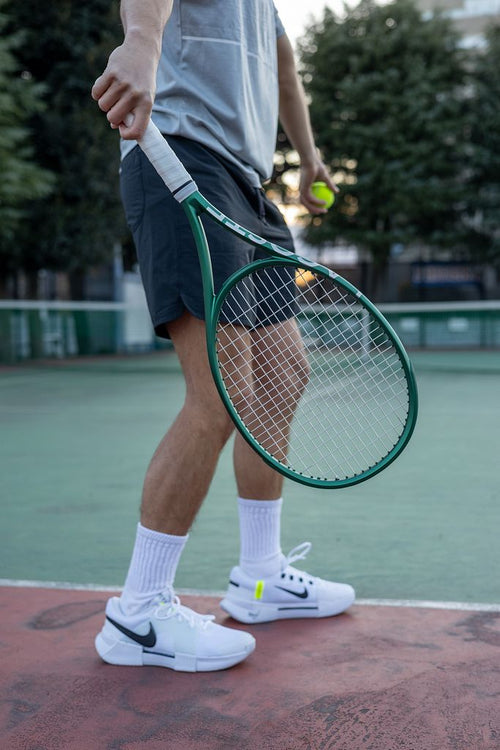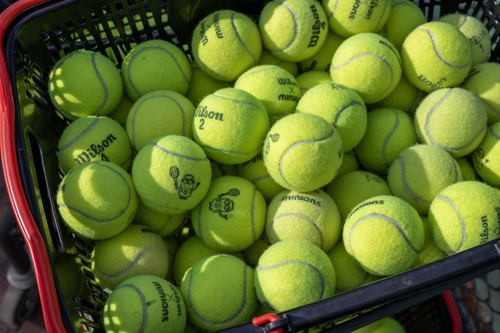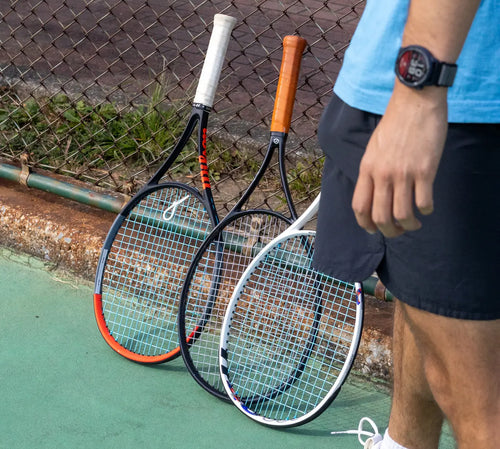Tennis String Gauge Explained: Expert Advice
Juan
A mere 0.05mm difference in gauge can transform how your racket performs.
That's why players obsess over finding the perfect setup. Whether you're looking for the durability of a thicker gauge like Zero's 16G or the enhanced control of a thinner gauge like Sync's 18G, understanding string gauge is crucial for optimizing your game.
This guide breaks down everything you need to know, from basic measurements to expert recommendations, helping you make the best choice for your setup.
How to Measure Tennis String Gauge
Tennis string gauge (thickness) is measured in two systems: US gauge (G) and metric (mm). While metric measurements are more precise, US gauge numbers are widely used.
| US Gauge (G) | Metric (mm) | Typical Use |
|---|---|---|
| 15 | 1.40 | Maximum durability, powerful baseline play |
| 16 | 1.28 | Most common gauge, balanced playability |
| 17 | 1.25 | Enhanced feel, good spin potential |
| 18 | 1.20 | Maximum spin and feel |
When shopping for strings, you might see L next to gauge numbers e.g. 16L, 17L. These are half sizes. For example, 16L is between 1.25mm and 1.28mm.
It's also worth noting that gauge measurements typically have a tolerance of ±0.02mm. For example, both a 1.23mm and 1.25mm string could be classified as 17 gauge, depending on the manufacturer's specifications. This small variation in measurement is standard across the industry and doesn't significantly impact playability.
How String Gauge Affects Your Game
Power vs Control
Thicker strings (lower gauge numbers) naturally provide more power due to their increased mass and stiffness. Thinner strings offer better control as they allow for more precise shot placement and better feel for the ball.
Spin Generation
Thinner strings bite into the ball more effectively, creating additional grip and spin potential. This is why many topspin-heavy players prefer 17 or 18 gauge strings, like Zero 17G.
Feel and Comfort
String gauge significantly impacts comfort. Thinner strings are generally more elastic and provide better shock absorption, making them easier on the arm.
Durability
As gauge numbers increase, string life decreases. A 16 gauge string typically lasts longer than an 18 gauge string, making it ideal for players who break strings frequently or want to maximize their string investment.
Ball Pocketing
Thinner strings like Sync 18G allow for better ball pocketing – how long the ball stays on the strings during contact. This increased dwell time gives players more control over their shots and helps generate additional spin.
String Gauge by Playing Level
Beginners
New players should start with thicker gauges (15-16) for durability and power. These strings last longer and typically provide more power, making them useful while developing proper technique.
Intermediate
As players develop consistent technique, they can explore 17 gauge strings. This middle ground offers a good balance of durability and performance. Many intermediate players find success with Zero's 17 gauge, which provides excellent spin potential while also providing fantastic durability. With an improving level, intermediate players can start to notice the benefit of the added pocketing and spin potential of the thinner gauge
Advanced
Advanced players typically benefit from thinner gauges (17-18) for enhanced feel and control. At this level, the added feel and improved playability of a thinner string can really help improve performance. That being said, as advanced players typically hit harder and cause more “stress” on their strings, a thicker gauge for durability can also be a consideration, especially for those concerned with budget and string replacement.
Professional
Pro players generally use thinner gauges to maximize performance. ReString sponsored professional Cristina Bucsa uses 17 gauge with a Zero x Sync hybrid setup.
String Gauge by Playing Style
Baseline Players
Heavy topspin players benefit from thinner gauges (17-18) for maximum spin potential and control. Zero's 17 gauge provides the ideal bite for aggressive baseline play. That being said, players who are concerned about durability can also consider the thicker version although this will provide a touch less spin and control. If your premium is on big power from the baseline, the thicker gauge might do it for you!
Serve and Volley Players
Net-focused players often prefer slightly thinner gauges for extra feel on their volleys. Players who place a premium on touch, will usually opt for a thinner product.
All-Court Players
Versatile players typically find success with middle gauges (17) that balance all aspects of the game. A 17 gauge Zero x Sync hybrid setup can provide the perfect blend of power and control.
Expert Tips and Recommendations
When testing a new gauge, change only one step at a time and play at least 3-4 sessions before making judgments. Pay attention to how the ball feels off your strings and any changes in your confidence with different shots.
Remember to adjust your string tension when changing gauges. As a general rule, when moving to a thinner gauge, increase tension by 2-3 pounds to maintain similar playability.
Consider hybrid setups to fine-tune your performance. The Zero x Sync hybrid combination offers an excellent balance, with each string's gauge chosen to complement specific aspects of your game.
It is also worth tracking your string durability. If you're breaking strings more than once every 2-3 weeks, you might want to try a thicker gauge or explore hybrid options that place a more durable string in the main strings.
Conclusion
Choosing the right string gauge is crucial for optimizing your tennis performance.
While beginners benefit from thicker gauges for durability, advanced players often prefer thinner options for enhanced control and spin. That being said, durability often becomes a factor at higher levels so a thicker gauge might be better for you if this is a concern.
Whether you're crushing baseline winners with 16G or 17G Zero, or finding precise control with 17G or 18G Sync, remember that string gauge is a personal choice that evolves with your game.








